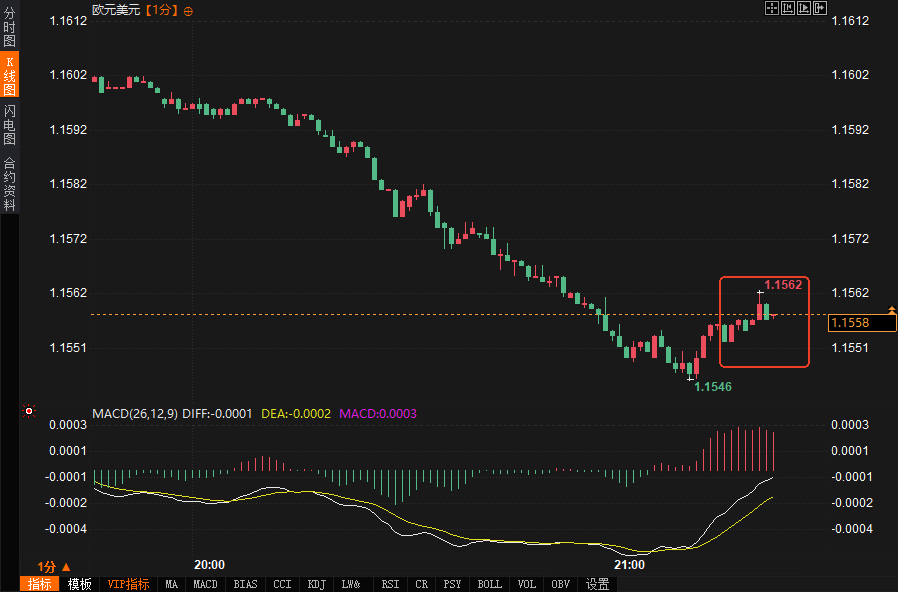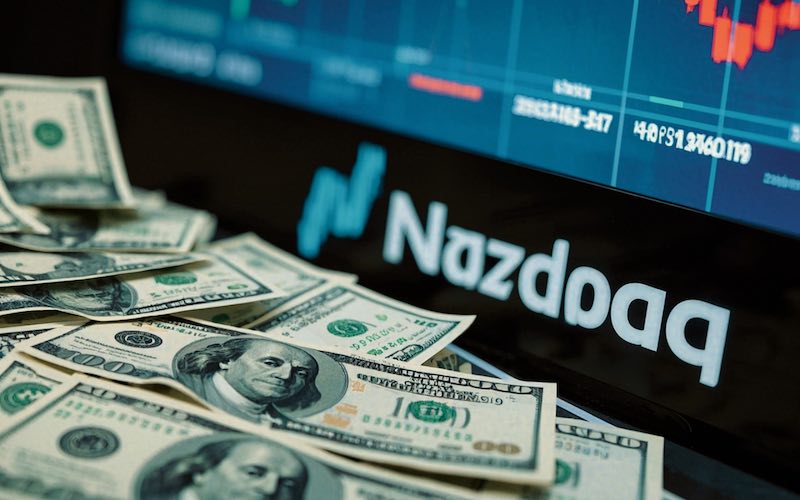The European Central Bank held rates steady, but be wary of the divergence behind this "steady progress" approach! The life-or-death struggle between the US dollar and the euro has only just begun!
2025-10-30 21:38:17

As we entered late October, market focus was already on central bank moves. The US tech earnings season and the lingering effects of the Federal Reserve's policies intertwined, causing the dollar index to stabilize and rebound after adjusting within the 4.00%-4.25% federal funds rate range, briefly pushing EUR/USD down to 1.1546. While this decision didn't bring any surprises, it injected new variables into the transatlantic policy divergence following the Fed's recent 25 basis point rate cut, prompting traders to quickly turn to interpreting the nuances of the statement.
The market reacted prudently immediately upon the announcement of the resolution. The European bond market was similarly subdued, with the yield on German 10-year bonds rising slightly to 2.45%, reflecting investors' initial approval of Eurozone fiscal expansion (such as German defense and infrastructure spending), but without triggering a sell-off.

The stark contrast between the discussions before and after the decision reveals a subtle shift in perspective between institutional and retail investors. Prior to the announcement, retail investors dominated optimistic expectations: many traders bet that the ECB would release a "data-dependent" signal, hinting at further easing in December or next spring. Typical examples include the argument that "the Eurozone PMI is recovering, and the window for interest rate cuts has opened." Combined with the Fed's rate-cutting path, retail investors enthusiastically discussed that "synchronous transoceanic easing will boost risk assets." Institutions, however, were more cautious. A well-known investment bank analysis pointed out that the euro's 12% appreciation against the dollar had already provided a buffer against import deflation, and the ECB had no need to rush to follow suit. The decline in exports due to trade frictions (a sharp drop in exports to the US) and the manufacturing PMI hovering around 45 constituted the anchor point for downside risks.
After the announcement, market sentiment shifted in favor of institutional investors, while retail investors began to interpret the news more cautiously. Institutions quickly amplified the resilience elements in the statement: a robust labor market, healthy private sector balance sheets, and the buffering effect of past rate cuts—viewed as "firewalls" against the uncertainties of global trade disputes and the Russia-Ukraine situation. An analyst from an international financial services provider bluntly stated, "Economic data is consistent with the previous quarter's projections; the risk of growth drag is overestimated; hawkish views may dominate the press conference," a stark contrast to retail investors' expectation that "the press conference will reveal the probability of a rate cut." Compared to before the announcement, the focus shifted from "easing expectations" to "uncertainty about the outlook," particularly the risk aversion triggered by tariff comments. Overall, this shift reinforced market acceptance of the ECB's "steady progress" approach, avoiding panic selling due to unmet expectations, and instead anchoring the market around the press conference.
The ECB's pause has amplified policy divergence: Eurozone inflation projections remain stable at 2.1% in 2025, with core inflation at 2.7%, far below the Fed's PCE forecast of 3.2%, allowing it to maintain a "good position" without rushing to ease monetary policy. This has a double-edged sword effect on market trends—in the short term, the continued strength of the US dollar may push EUR/USD down to test 1.1540, but the downside for the euro is limited, as the ECB reiterated that "all options are open," implying a 40%-50% probability of a rate cut next summer.
Looking ahead, the ECB's path will heavily depend on the tone of Lagarde's press conference at 21:45 Beijing time. If she strengthens "data guidance" and downplays downside risks, the Eurozone will continue its soft landing trajectory, and the medium-term target of EUR/USD at 1.17-1.18 is self-consistent. In the long term, with the Eurozone's growth projection at 1.1%, fiscal expansion (such as Germany's 2% GDP defense spending) and deflation buffers could resonate and push potential growth to 1.5%, without requiring excessive intervention from the ECB. However, if trade uncertainty and geopolitical tensions escalate, inflation may fall to 1.7% in 2026, opening a window for easing of 50-75 basis points.
Overall, this decision strengthens the European Central Bank's strategic resolve and provides breathing room for the euro during the Fed's rate-cutting cycle. The market will be dominated by a resilience narrative, awaiting the next chapter of the global macroeconomy.
- Risk Warning and Disclaimer
- The market involves risk, and trading may not be suitable for all investors. This article is for reference only and does not constitute personal investment advice, nor does it take into account certain users’ specific investment objectives, financial situation, or other needs. Any investment decisions made based on this information are at your own risk.





















